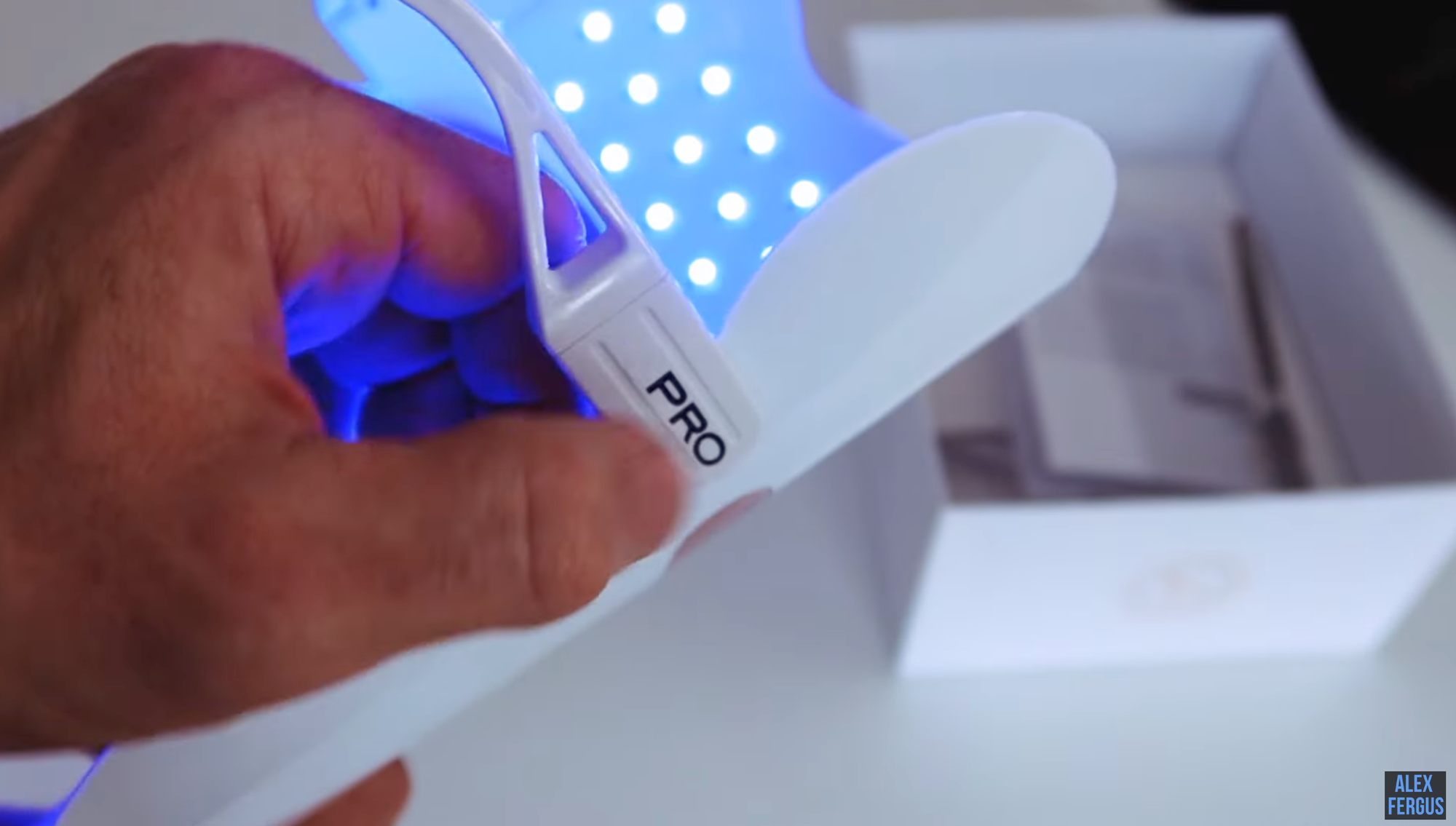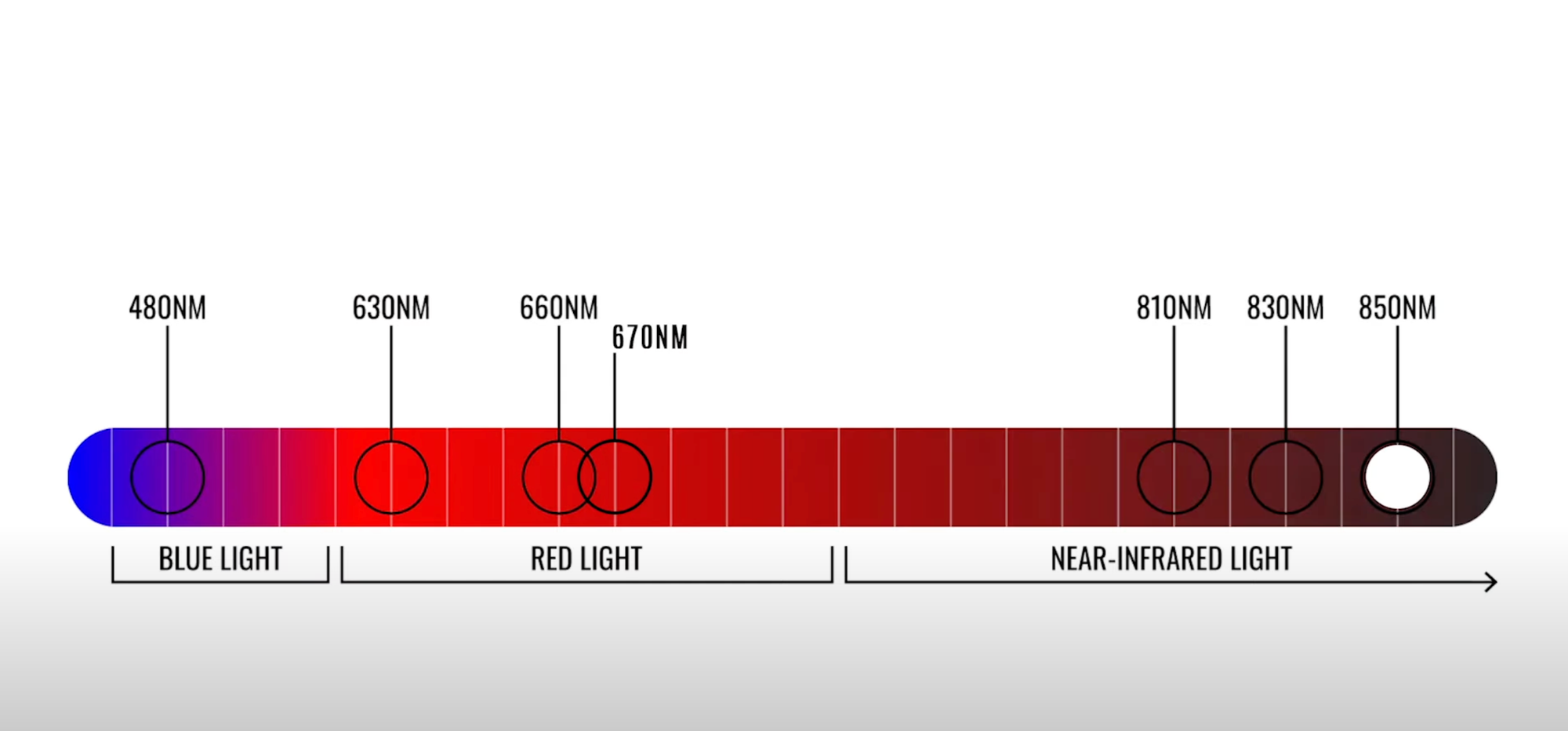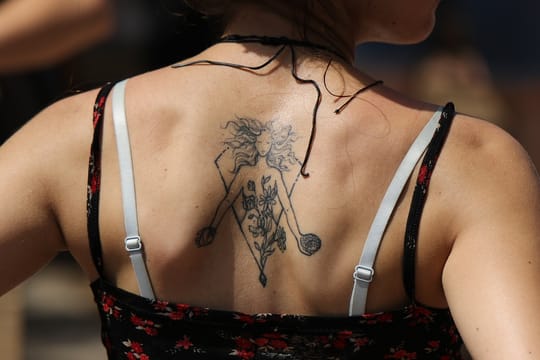If you’re considering red light therapy, you’ve probably encountered two popular options: red light therapy panels and masks. While both aim to deliver therapeutic benefits, they differ vastly in performance, usability, and value.
In this article, we’ll explain everything you need to know about these devices so you can decide which one best suits your needs.
I’ve reviewed many red light therapy devices, including smaller tabletop panels, larger panels, and wearable masks like the Omnilux Men’s Mask and the Dermabeam Mask. These reviews (linked below) dive into individual product details, but today, we’re comparing panels and masks head-to-head.
Let’s explore how price, power, usability, and performance differ.
Pricing:
At first glance, masks and panels seem comparable in pricing. A good-quality red light therapy panel designed for facial use, such as smaller tabletop models, usually costs between $250 and $600. For example, the Infraredi Mini Panel costs $550, the Mito Red Pro Mini costs around $300–$400, and the Hooga 300 panel costs closer to $260. These panels offer a range of features, but all provide efficient and powerful therapy.
Conversely, red light therapy masks also fall within this price range. The Omnilux Men’s Mask retails for about $400, while the Dermabeam Mask is around $250.
While the upfront cost might appear similar, there’s a significant difference in the value you receive. As we’ll explore, panels deliver more power, broader light coverage, and more excellent long-term utility, while masks are far less powerful and limited in their effectiveness.
The Science of Power Output: Why Strength Matters in Red Light Therapy
The power output of a red light therapy device is one of the most essential factors in determining its effectiveness. Without sufficient power, the light won’t penetrate deeply enough to deliver meaningful therapeutic benefits. Simply put, more power equals faster results and shorter treatment times.
Panels: High-Powered Workhorses
Red light therapy panels are powerful. These devices typically feature metal construction, advanced cooling systems (like fans), and direct wall plugs, allowing them to deliver maximum energy. Their LEDs emit light so bright that a panel can illuminate an entire room.
When measured at a standard treatment distance of 6 inches, panels commonly deliver 40–60 milliwatts per square centimeter (mW/cm²). The closer you move to the panel, the more intense the energy becomes, enabling you to customize your treatment. This power output ensures therapeutic wavelengths penetrate deep into the skin and underlying tissues.
Tabletops are a good alternative to masks.
Masks: Low-Powered and Battery-Dependent
In contrast, wearable masks are far less powerful. They’re designed to be lightweight and portable, relying on rechargeable batteries rather than direct wall plugs. This design limits their ability to deliver strong light output.
On average, masks produce between 1 and 25 mW/cm², measured by pressing the mask directly against the skin. The intensity drops sharply if you move even a small distance away, meaning masks often cannot deliver enough energy to achieve noticeable therapeutic effects without extremely long treatment times.
Treatment Times: Efficiency Is Key
Treatment time is another critical factor to consider. A red light therapy device must emit enough energy to reach a therapeutic dose and deliver effective results.
Research has shown that 10 joules per square centimeter (J/cm²) is best for skin health. The dose you achieve depends on the device’s power and how long you use it.
Panels excel in this area. With a typical output of 40–60 mW/cm², you can achieve a therapeutic dose in 2 to 3 minutes at a 6-inch distance. This efficiency makes panels an excellent choice for anyone with a busy schedule.
Masks, however, are much slower. The Omnilux Men’s Mask requires 10 to 15 minutes per session, and the Dermabeam Mask can take 60 to 90 minutes to deliver the same dose.
This means you’ll need to spend significantly more time using a mask to achieve results comparable to those a panel can deliver in just a few minutes.

Value for Money: Panels Deliver More Bang for Your Buck
When evaluating the value of a red light therapy device, it’s helpful to look at the cost per watt of therapeutic light output. This metric highlights how efficiently a device delivers energy relative to its price.
Red light therapy panels are the clear winner, costing $4 to $10 per watt of light. Masks, by comparison, range from $16 to $200 per watt, making them a much less cost-effective option.
While masks might seem appealing because of their portability and simplicity, their lower power output and longer treatment times make them a less economical choice in the long run.

Wavelengths: Which Devices Deliver the Right Light?
The wavelengths of light a device emits determine the specific therapeutic benefits you’ll receive. For most applications, you’ll want red light (630–660nm) and near-infrared light (810–850nm). Scientific studies have shown that these wavelengths stimulate collagen production, improve skin tone, and support deeper healing.

Panels: Consistent and Reliable Wavelengths
Most panels include these key wavelengths, and some even add additional options for versatility. Specific models also offer blue light, which is beneficial for acne treatment, though it’s not as universally applicable as red and near-infrared light.
Masks: A Mixed Bag of Wavelengths
Masks often include a mix of wavelengths, but their effectiveness varies. The Omnilux Mask combines red light (630nm) with near-infrared light (830nm and 1070nm). The 1070nm wavelength is unique to this mask and penetrates deeper than 850nm, though the research on its benefits is still limited.
The Dermabeam Mask goes even further, including blue light (460–470nm) and green light. Although blue light can help with acne, the benefits of green light are unclear and lack widespread research support.
Light Coverage: Panels Provide Full, Even Exposure
Light coverage is another area where panels and masks differ significantly. Panels deliver consistent, even light across a broad area, ensuring every part of the skin receives the same therapeutic dose. The densely packed LEDs and large panel surface area make it ideal for full-face or even full-body treatments.
Masks have noticeable gaps between their LEDs, often around 1 inch apart. This uneven placement means certain areas of the skin receive less light, leading to inconsistent results. While masks are convenient for direct skin contact, their limited light coverage is a drawback compared to panels' broad, uniform exposure.

Usability: Convenience vs. Comfort
For usability, panels and masks each have their pros and cons.
Panels are straightforward to use. You can sit in front of the device while listening to a podcast, reading a book, or meditating, making the experience seamless and relaxing. Because treatment times are so short, you can easily fit sessions into even the busiest routine.
While portable, masks can be less comfortable. They often use straps or bands to secure them in place, which can feel restrictive. Masks also limit visibility; longer treatment times make the entire experience less convenient.
If you are looking for portability, watch this video!
Durability and Warranty: Panels Last Longer
Red light therapy panels are designed to last. Most models come with warranties ranging from 2 to 3 years or more, reflecting their robust construction and durability. Masks, in contrast, typically offer shorter warranties of 1 to 2 years, and their lighter, battery-powered design means they may not hold up as well.
The Bottom Line: Panels Outperform Masks
While both panels and masks have their place in red light therapy, panels are the clear choice for those seeking practical, efficient, and long-lasting results. Their superior power, shorter treatment times, better value, and broader light coverage make them a far better investment.
Masks might be suitable for occasional use or for those who prioritize portability, but they can’t match the performance of a well-made panel. A quality panel is worth every penny if you’re serious about improving your skin health or reaping the full benefits of red light therapy.
Check out this video if you're considering purchasing a panel!
Items Mentioned In This Article:
- For an Omnilux mask, click the link and the discount is automatically applied
- For Dermabeam Pro Mask, click the link and use discount code ALEX.
- Infraredi Flex Mini - click the link and use code ALEX for a 5% discount.
- For a Mito Red panel, click the link and use discount code ALEX5.
- For a Hooga panel, click the link and use code ALEX for 10% OFF.
Consider These YouTube Videos As Well:
🔴 BEST Portable Red Light Device: ULTIMATE Battle!
🔴 Red Light Therapy Buyers Guide - Avoid THESE Mistakes!
🔴 The Best Budget-Friendly Red Light Therapy Panel
🔴 How To Use Red Light Therapy 101: Know THIS For Starters
🔴 How To Choose A Red Light Therapy Device: COMPLETE Guide
Found This Interesting? Look At These Articles:
🔴 Is Red Light Therapy Science-Based? An Introduction
🔴 Red Light Therapy Dosing: Why It's Complicated!
🔴 Red Light Therapy: What’s The Ideal Distance from Skin?
🔴 Red Light Therapy For Oral Health Ultimate Guide: 20 Unique Benefits!
🔴 Red Light Therapy For Skin: Beauty Benefits, Potential Complications, And More
Alex's Bio
This blog post was written by Alex Fergus. Alex is a ISSN Sports Nutrition Specialist, Fitness Professional and certified Superhuman Coach who continues to expand his knowledge base and help people across the world with their health and wellness. Alex is recognized as the National Record Holder in Powerlifting and Indoor Rowing and has earned the title of the Australian National Natural Bodybuilding Champion. Having worked as a health coach and personal trainer for over a decade, Alex now researches all things health and wellness and shares his findings on this blog. .









